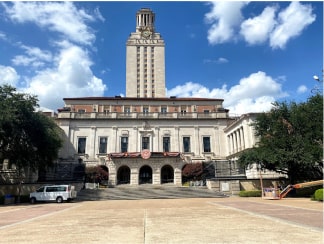Random Forest

Ratings
Level
Learning hours
Learners
Skills you’ll Learn
About this course
Machine learning is considered to be one of the most impactful technologies we have today. It sees its usage in almost all of the domains we have so it is equally popular among students, researchers, and professionals. I am sure you already know that a well-tuned machine learning model is very powerful and efficient at solving problems. Algorithms are what give this unmatched power to the world of Machine Learning. Random forest is one such popular algorithm that is used in multiple domains. As a learner, it is key that you understand how this algorithm works.
Check out our PG Course in Machine learning Today.
Course Outline
Ratings & Reviews of this Course
Frequently Asked Questions
What is a random forest, and how does it works?
A random forest is a part of supervised machine learning calculation developed from decision tree calculations. This calculation is applied in different businesses like banking and web-based businesses to predict conduct and outcoming results. A random forest is a machine learning algorithm that is utilized to tackle regression along with classification issues. It uses ensemble learning, a strategy that consolidates numerous classifiers to give answers for complex issues.
Why is random forest good?
The decision trees risk overfitting as they will quite often tend to fit every one of the examples inside data used for training. The classifier will not overfit the model since the averaging of uncorrelated trees brings down the general difference and error in prediction. Random forest makes it simple to assess variable significance or commitment to the model.
Does random forest give profitability?
This random forest regression can be used in different projects like SAS, R & python. In a random forest regression model, each tree creates a particular prediction. The mean of prediction of every individual tree is the result of the random forest regression. This is indifference to the random forest classification method, whose result is controlled by the method of decision trees' class.
What is the difference between a decision tree and a random forest?
The fundamental distinction between the decision tree calculation and the random forest calculation is that building up the root nodes and isolating these roots is done randomly in the last option. The random forest utilizes the bagging technique to create the necessary predictions.
Is random forest deep learning?
The Random Forest algorithm and Neural networks from deep learning are various methods that adapt diversely however, can be utilized in particular comparable spaces. Random Forest is a strategy of ML, while Neural Organizations are selective to Deep Learning.
Popular Upskilling Programs
Random Forest
Since the random forest model is comprised of different decision trees, it would be useful to begin by understanding the decision tree calculation in a brief way.
A decision tree is a decision support procedure that frames a tree-like design. An outline of decision trees will assist us with seeing how random forest calculations work.
A decision tree comprises three parts: decision nodes along with leaf nodes and root hubs. A decision tree calculation partitions a train set of data into branches, further isolating it into different branches. This arrangement proceeds until a leaf node is achieved. The leaf node can't be isolated further.
These nodes in the decision tree address ascribe that are utilized for foreseeing the result. These decision nodes give us a connection to the leaves.
The fundamental distinction between the decision tree calculation and the random forest calculation is that the last option is to build up the root nodes and isolate these roots randomly. The random forest utilizes the bagging technique to create the necessary predictions.
Packing includes utilizing various examples of data provided, like training data rather than only one example. A dataset used for training involves perceptions and elements that are utilized for making forecasts. The decision trees produce various results, contingent upon the data for training provided to the random forest calculation. These results will be positioned, and the high valued or ranked will be chosen as the last result.
The classification, when it comes to random forests, utilizes an ensemble method to achieve the result. The data for training is taken care of to prepare different decision trees. This dataset comprises perceptions and highlights that will be chosen randomly during the parting of root nodes.
In general, a Random Forest framework depends on different decision trees. Each decision tree comprises decision hubs or nodes also leaf nodes, and a root node. The leaf node of a tree is the last result delivered by that particular decision tree. The choice of the last result follows the majority of votes. For this situation, the result picked by most of the decision trees turns into the last result of the rainforest framework.
Regression is another kind of work performed by a random forest method or algorithm. A random forest in regression follows the idea of simple regression. All the values are passed to the random forest method, which includes independent and dependent variables or features.
In a random forest regression model, each tree creates a particular prediction. The mean of prediction of every individual tree is the result of the random forest regression. This is indifference to the random forest classification method, whose result is controlled by the method of decision trees' class. This random forest regression can be used in different projects like SAS, R & python.
Even though random forest regression and linear regression follow a similar idea, they contrast considering the functions. The function in the linear regression is y is equal to "bx + c,” where y is the variable (dependent), x is the variable(independent), b is the parameter used for estimation, and c is taken to be constant. The complex random forest regression function resembles a black box.
The random forest method presents various key benefits and difficulties when utilized for classification or regression issues. Some of them are as follows:
Key Advantages
-
It reduces the risk of overfitting: The decision trees risk overfitting as they will quite often tend to fit every one of the examples inside data used for training. Notwithstanding, when there's a good number of decision trees in a random forest model, the classifier will not overfit the model since the averaging of uncorrelated trees brings down the general difference and error in prediction.
-
Gives adaptability: Since random forest can deal with regression and classification assignments with a serious level of accuracy, it is a well-known strategy for data scientists. The feature bagging method likewise makes the random forest classifier a viable device for assessing missing values. It keeps up with precision when a piece of the data is absent or gone missing.
-
Simple to decide the feature importance: Random forest makes it simple to assess variable significance or commitment. There are a couple of ways of assessing feature importance. Gini significance and mean diminishing in MDI are typically used to quantify how much the model's precision will decrease when a given variable is taken off. Notwithstanding, the importance of permutation, otherwise called mean reduction exactness of the MDA, is another significant measure. MDA distinguishes the decrease in average precision or accuracy by randomly permuting the component values in available samples of OOB.
-
Key Challenges: The process consumes more time: Since random forest calculations can deal with enormous information or data. They can give more precise expectations; however, they can be delayed in handling information as they are processing the given information for every separate decision tree.
-
Requires more assets or resources: Since random forests process bigger data collections, they'll require more assets or resources to store that information or data.
-
The process is more complex: The forecast of one decision tree is simpler and easy to decipher when contrasted with a forest of them.
A part of the applications of the random forest might include:
Banking Section :
Random forest is utilized in banking to anticipate the reliability of a candidate who took the loan. This aids the loaning organization to settle on a decent choice on whether or not to give the loan to the client. Banks additionally utilize the random forest calculation to identify fraudsters.
Medical Care :
Well-being experts utilize random forest frameworks to analyze patients. Patients are analyzed by evaluating their past clinical history. Past clinical records are assessed to set up the right dose for the patients.
Financial Exchange :
Monetary experts use it to recognize business sectors with good potential for stocks. It likewise empowers them to recognize the behavior of the stock.
Internet Business or E-Commerce :
Through random forest calculations, internet business sellers can foresee the inclination of clients dependent on past utilization behavior. Random forest calculation is an ML algorithm or methodology that is not difficult to utilize and adaptable. It utilizes ensemble learning, which empowers associations to take care of regression and classification issues.
This is an ideal method or algorithm for designers since it takes care of the issue of overfitting datasets. It's an exceptionally clever tool for settling on exact forecasts required in essential decision-making in groups.
We want the type of features that have the minimum required power to predict. If we put trash in then, we will get the trash out.
The trees of the random forest and all the more significantly their prediction values should be uncorrelated or possibly have low connections with one another. While the actual calculation through feature randomness attempts to design these low correlations, the elements we select and the hyper-boundaries we pick will affect definitive dependency or correlations too.




























